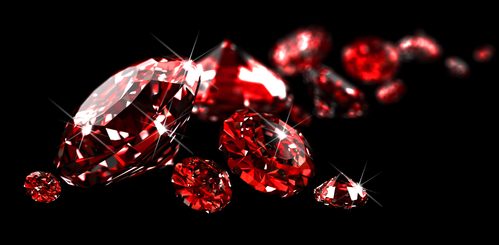How To Shop For A Ruby In Burma

Burma (also known as Myanmar), has one of the most exciting gem markets on Earth. In particular, the country is famous for its rubies which are coveted for their beauty and quality. Rubies have a corundum classification and will display colors such as pink, white, red, blue, purple and black. However, there are a number of things that people shopping for a ruby in Burma need to be aware of, so as to ensure they get a great deal.
Beware of Fake Burmese Rubies Online
Every lucrative market will attract its share of conmen, and this is true with Burmese rubies. When planning a purchase over the web, be sure that the individual you’re buying from has a return policy which is clear and acceptable. Second, when viewing Burmese rubies online, remember that its color has likely not been reproduced accurately, even when the gem is authentic. The reason for this is because every computer screen differs in calibration and some merchants will digitally enhance the gem’s photos in order to make it look better.
Never buy from an online or offline merchant without taking the time to check their reviews or feedback. A company which has received a lot of feedback, or which is listed in the Better Business Bureau, is likely to be a legitimate source. If you’re traveling to Burma itself, avoid buying rubies off the street and stick to established sources that have an excellent reputation.
How To Separate Real Burmese Rubies From Fakes
Aside from only shopping with the most reputable precious stone merchants, there are a number of other ways to identify authentic rubies. It is important to note that many rubies are manmade, produced in a lab. There are likely more synthetic stones being sold over the web than genuine ones. One telltale sign of a fake ruby is one where the stone is too transparent, where the star is too easy to see. Another treatment used on synthetic rubies is diffusion, which is designed to enhance asterism so that star can be seen easier. While authentic rubies will come in many different colors, synthetic rubies will usually be restricted to blue or red.
Many people also confuse Star Garnets for being Burmese rubies when they actually are not. Star Garnets are most common in India but the rays they have are fewer in number, which is the best way to tell their difference, as rubies or other members of the corundum family have between six and twelve rays while a garnet will only have from four to six.
As is always the case, conmen will play on the consumer’s ignorance, emotions and lack of knowledge regarding rubies to sell them counterfeit merchandise. By taking the time to learn a bit about the rubies sold in Myanmar, you will become an educated consumer, and an educated consumer is a wise shopper!


